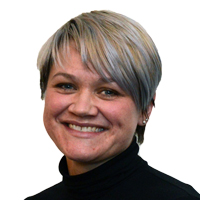Speaker Bio & Abstract

Geological Survey
Norway
BiographyGeologist with experience within multiple fields all from large scale rockslides, tunneling with a focus on water leakage and feasibility studies, mapping of radon hazard. At present working on projects with a focus on urban geology, subsidence using InSAR data, climate adaptation and water management. Adapting geological data to end users for a holistic approach in spatial planning. With focus on the ground beneath our cities, especially to the processes between surface water and groundwater, with the aim for sustainable solutions for future resilient cities.AbstractThe subsurface is important for cities. Cities not only expand outward and upward, but also downward. The more use we make of subsurface space, the more surface space we free for the one function that cannot do without daylight and fresh air: living. Increasing urbanisation challenges the sustainability and resilience of cities world-wide. At the same time, often overlooked are the resources and opportunities in the ground beneath our cities. The subsurface represents great risk as well as possibilities in spatial planning. To plan and build sustainable and resilient cities the subsurface must be included in spatial planning.
The climate is changing with new and more challenges ahead, that needs awareness, good data management and knowledge for good decisions to be made. This presentation will give examples from Norway where data from InSAR, Sentinel1 Satellite, shows subsidence with complex geological ground conditions that require awareness to build safe and avoid extra and unexpected costs. Such data is further used for risk assessment mapping, related to subsidence, flooding and finding areas for mitigation. Knowledge exchange and a common language for improved communication between the urban planners and the subsurface experts is the key to sustainable and resilient city development.